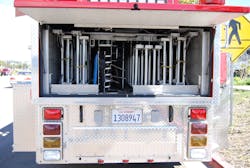The City of Coronado was incorporated in 1890 and in one of the most desired vacation destinations in the United States. Also known as Coronado Island, the city is located in San Diego County and is surrounded by the Pacific Ocean and San Diego Bay. The city land area covers approximately eight square miles with over 24 square miles of water. Originally, Coronado was separated from North Island, which was occupied by the U.S. Naval Air Station. During World War II, the water channel known as the Spanish Bight was filled in and allowed easier access to the area. In 1969, the Coronado Bridge was opened, which permitted faster transit to the community. Coronado is Spanish for “the crowned one,” and is nicknamed The Crown City.
One of the most famous structures within Coronado is the Hotel del Coronado, which was built in 1888 and is listed on the register of National Historic Landmarks. Over the years, in addition to being a vacation destination the hotel, has hosted guests such as Thomas Edison, Babe Ruth as well as many of our presidents over the years.
The city population of 18,900 is protected by the Coronado Fire Department, which operates from two fire stations and is under the command of Fire Chief John Traylor. The department maintains automatic aid agreements with the neighboring departments, including San Diego, National City, Imperial Beach as well as the Federal Fire Department. The department responded to 2,261 incidents during 2010 and staffs an engine, ladder and medic unit on each shift with 10 personnel and a Division Chief. Response to reported structural fires includes four engines, two ladders, one medic unit and two battalion chiefs. The department maintains several divisions including administration, operations and training, EMS, fire prevention, public education and emergency preparedness.
Over the years, the Coronado Fire Department has operated a number of unique apparatus including a 1953 Mack L-model quad that was equipped with a squirrel tail-style suction that was used extensively by the Long Beach, CA, Fire Department. Engine apparatus included both a 1963 and 1975 Crown Coach units as well as a 2000 Pierce Quantum 1250-gpm pumper. Aerial apparatus that have served with the department include a classic open-cab 1972 Crown Coach, equipped with a Maxim 100-foot midship ladder, together with a 1989 Spartan/General Safety 1250-gpm pumper carrying a 50-foot Tele Squrt water tower. As both of these units were operated as quint apparatus, the department sought to design a combination aerial vehicle when it came time to replace the Tele Squrt apparatus.
The department’s newest pumper was acquired earlier this year and assigned to Engine 36. This vehicle is a Spartan Gladiator chassis with stainless steel bodywork by Crimson Fire. Engine 36 is powered by a Caterpillar C-13 engine rated at 525 horsepower and carries a Hale Qmax 1500-gpm fire pump, 500-gallon water tank together with a 30-gallon foam cell with a Foam Pro 2001 injection system.
After not operating with a full-size aerial ladder apparatus for a few years, the department set out to design a tractor drawn aerial unit for increased maneuverability, which would also be equipped with a fire pump and basic engine company equipment. The result of these efforts lead to the delivery of Truck 37, which operates with a crew of four personnel on all shifts from the department’s station located in Coronado Cays.
Truck 37 is a 2009 Spartan Motors Gladiator model tractor with a Crimson Fire 103-foot aerial ladder. The tractor wheelbase is 170 inches, with a trailer wheelbase of 346 inches and an overall vehicle length of 60 feet, 3 inches. The overall height of the unit is 11 feet, 6 inches at the top of the tiller cab enclosure. The vehicle is powered by a Caterpillar C-13 engine rated at 525 horsepower through an Allison EVS-4000 transmission.
The tractor is equipped with a Ridewell air suspension on the rear axle rated at 31,000 pounds. Braking is provided by Meritor EX225 17-inch disc brakes on the front axle, 16.5-inch x 7-inch S-cam brakes on the rear, together with a Caterpillar engine brake. Seating is provided for four personnel with safety equipment including RollTek, Bostrum Securall SCBA brackets, back-up camera, intercom headset system and enclosed EMS cabinets inside of the rear crew seating area.
The four section 103-foot steel aerial ladder has a rated tip load of 500 pounds and is supported by two outriggers with a 14-foot stance. The waterway is rated at 1000 gpm and can be supplied by two 4-inch inlets located under the turntable. The aerial monitor is an Elkhart Scorpion model 8294-06 and can be positioned at either the third or fourth fly sections of the aerial to promote rescue operations. The tip of the aerial ladder can provide scene lighting with two Collins FX-12 spot lights and two Havis Shield Magnafire 3000, 750-watt lights.
Ground ladders carried on the unit include two 35-foot extension, two 28-foot extension, two 14-foot extension, one 20-foot wall, one 16-foot wall, one 8-foot wall and one 10-foot folding ladder, which are individually banked on beam on the trailer. The apparatus is equipped with a Harrison 10-Kw hydraulic generator, which supplies power to two electric cable reels and six 750-watt Havis Shields lights in addition to several body outlets.
The fire pump is a Hale Q-Max single-stage rated at 1500 gpm and supplies two 2.5-inch left-side panel discharges, one 2.5-inch and one 4-inch right-side panel discharge, together with one 2-inch and one 2.5-inch crosslay discharges. The 300-gallon water tank is located on the tractor and supplies a 3-inch tank to pump line. The apparatus body is fabricated from aluminum and is equipped with 12 enclosed compartments for tool and equipment storage. All of the trailer compartments ahead of the rear axle have transverse storage capabilities and are provided with slide-out trays for easy access to equipment. The forward-most body compartment carries an assortment of fittings and 4-inch hose to supply the aerial waterway when required. A hosebed above the right-side body compartments carries 400 feet of 4-inch hose for supply line.
Emergency warning lights consist of a Whelen Edge Ultra Freedom 72-inch wide LED light bar on the cab roof with an Opticom traffic emitter. Whelen 600 series LED lights are installed along each side and the rear of the trailer with Whelen Micro Edge LED light bars provided at the rear body near the tiller cab. Auxiliary lighting includes a Whelen TAM83 LED arrow stick at the rear of the trailer with two “Go” lights positioned on top of the tractor cab roof. Zico dock lights are provided on each side of the trailer wheel-well area to illuminate this area for the tiller man when maneuvering in tight locations. A Havis Shield 12-volt brow light provides scene lighting for the front of the apparatus.
Truck 37 is a well-designed tractor-drawn aerial ladder that carries an assortment of both engine and ladder company equipment to carry out any task that might be assigned. This vehicle is an excellent example of combining the needed appliances, tools and equipment into a single apparatus with the packaging of all of these items into a well thought out arrangement. Appreciation is extended to Division Chief Ed Hadfield, who provided information and assisted with making arrangements to photograph this apparatus.
- See Tom Live! Tom Shand will be presenting "Fire Apparatus Purchasing: What You Need to Know Before Signing the Contract" and "Engine Companies: The Top 5 Things You Need to Accomplish at All Incidents" at Firehouse Expo, July 19 - 23, in Baltimore.
TOM SHAND is a 37-year veteran of the fire service having served with departments in Maryland, Pennsylvania and New York. He has worked in the fire apparatus industry since 1985, including 15 years with Saulsbury Fire Apparatus. He is a contributing editor to Fire Apparatus Journal and Firehouse Magazine and works with Mike Wilbur at Emergency Vehicle Response. He co-hosts the Apparatus Architects podcast with Wilbur, based on their column in Firehouse Magazine.
About the Author

Tom Shand
TOM SHAND, who is a Firehouse contributing editor, is a 36-year veteran of the fire service. He works with Michael Wilbur at Emergency Vehicle Response, consulting on a variety of fire apparatus and fire department master-planning issues. Shand is a member of the Firehouse Hall of Fame.
